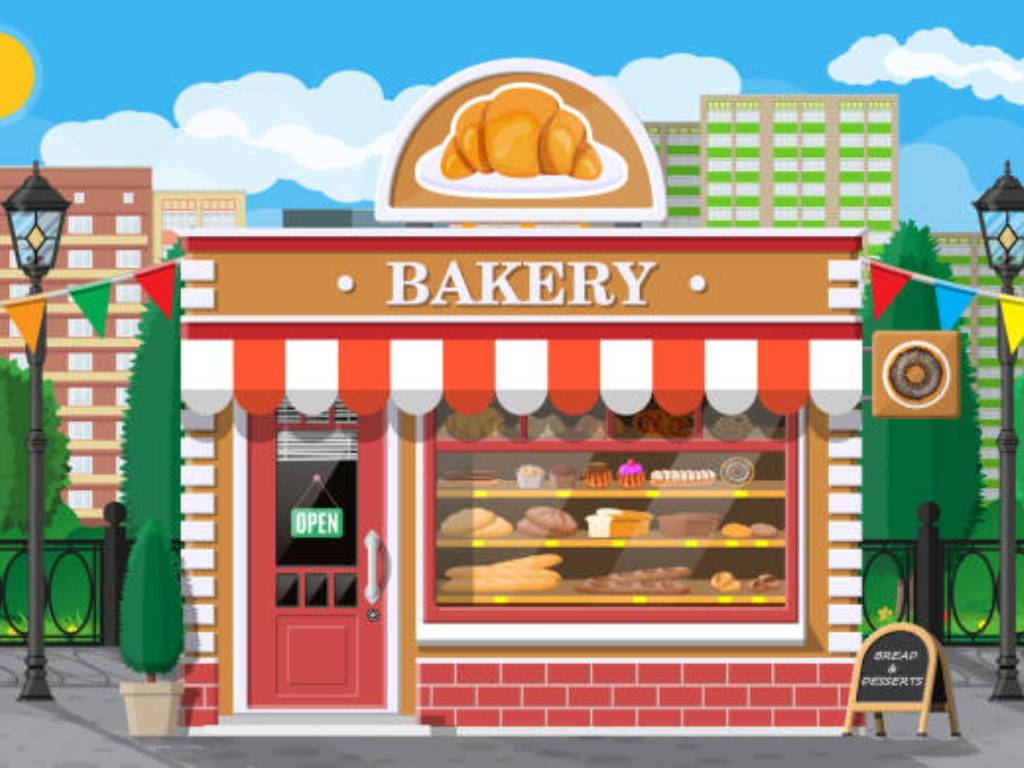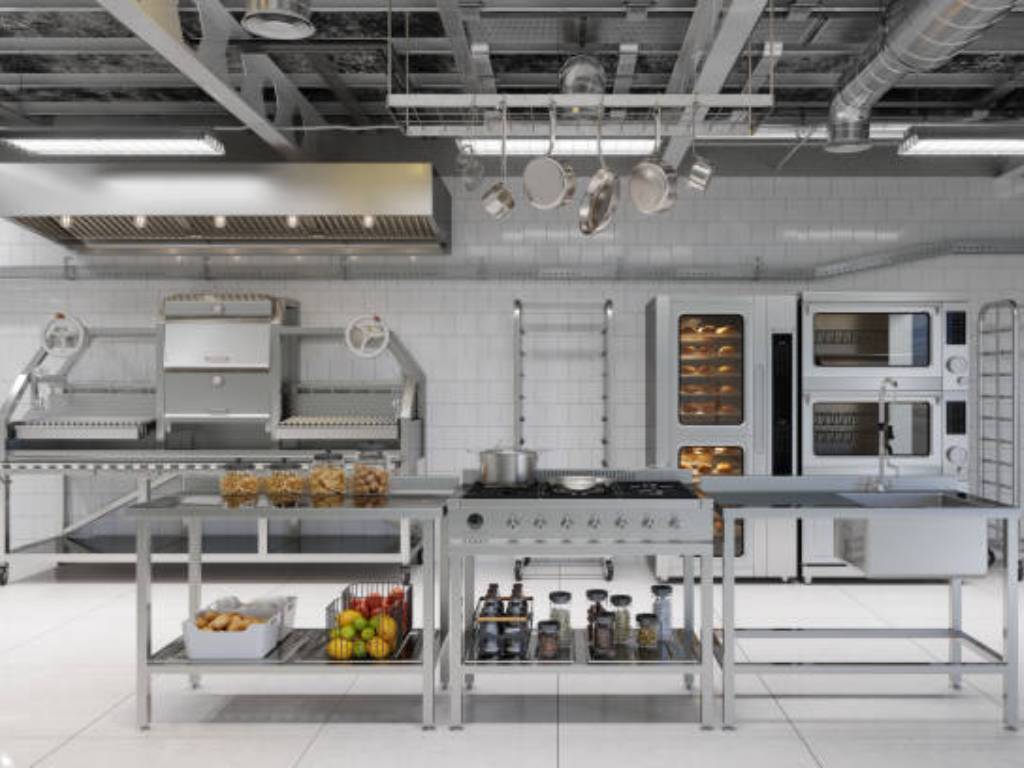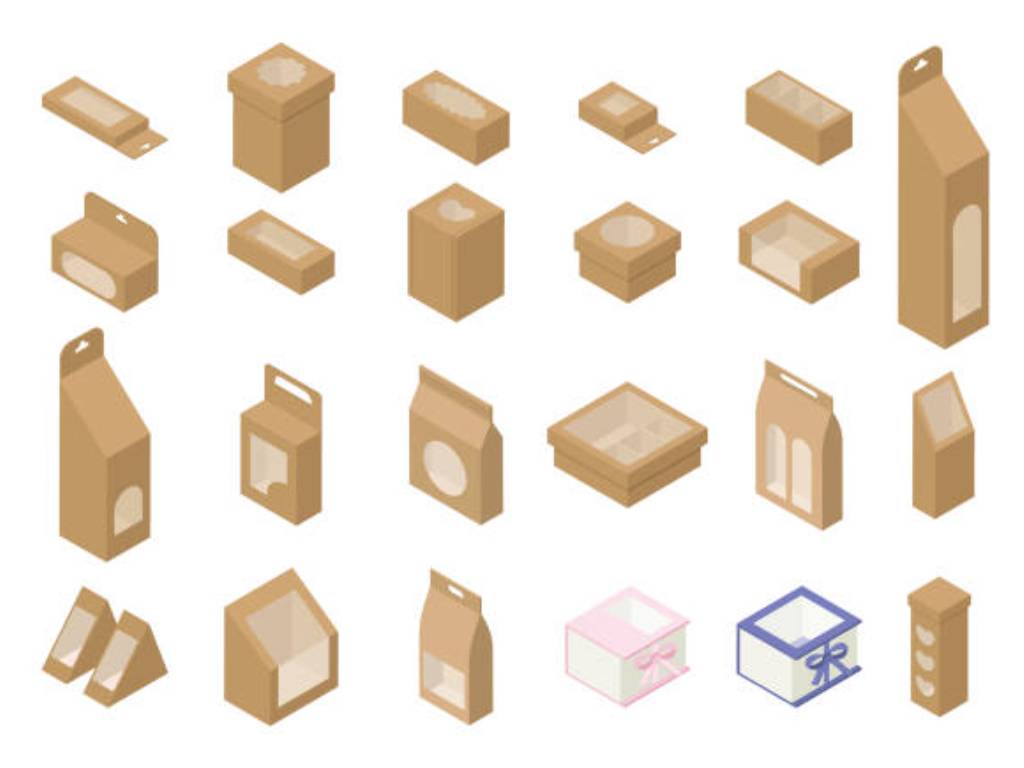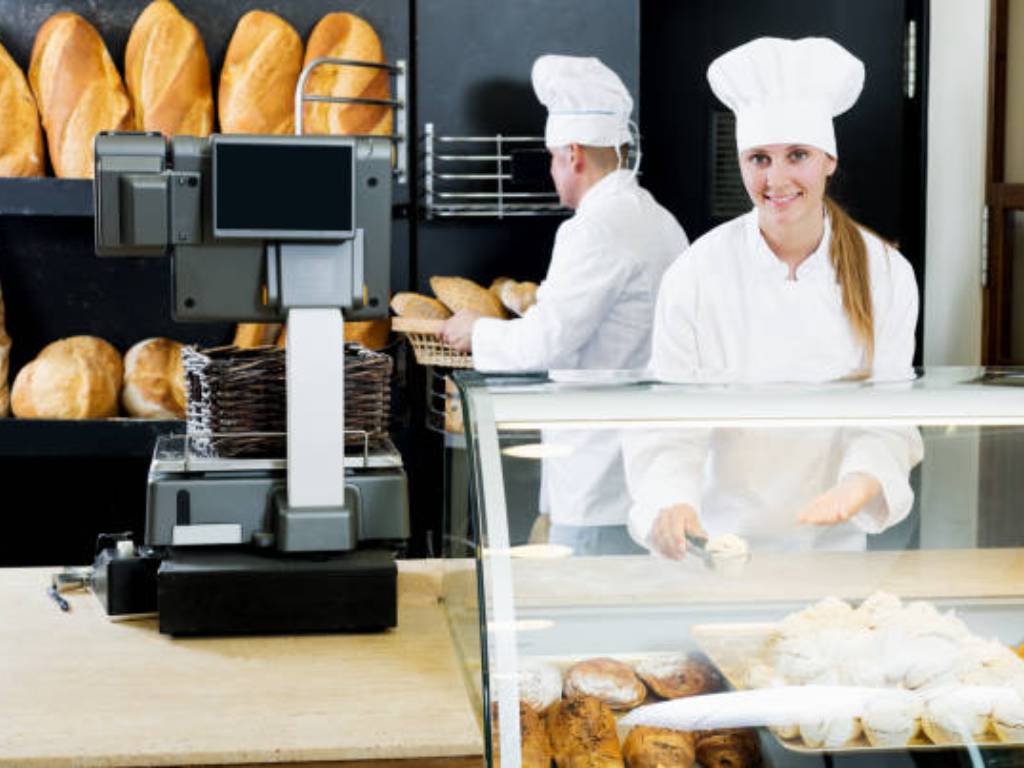Introduction
Greetings, aspiring entrepreneur! Are you envisioning an entry into the sphere of bakery enterprises? Fortuitously, you are seizing the moment during an auspicious period of growth in the industry. Envision this scenario: by the year 2024, projections by Allied Market Research indicate that the global bakery market is set to escalate to an astounding $570.1 billion. The industry is teeming with prospects, particularly for innovative entrants such as yourself.

But what catalyzes this burgeoning trend? A burgeoning affinity for artisanal bread and exquisite, niche confections underpins the surge, complemented by the populace’s penchant for convenient snacking. However, despite the flourishing market, an insatiable appetite persists for unique and exceptional baked creations.
This editorial aims to delineate the substantive components of actualizing your bakery ambitions. Contemplate the harmonious blend of your baking prowess, a touch of ingenuity, and an unwavering commitment to excellence, all underpinned by astute business strategizing. With the right mix, you are poised to cultivate a bakery venture as enticing as your desserts. Ready to commit to this venture and substitute your routine employment for entrepreneurship? Let us proceed.
Step 1: Defining Your Baking Business Vision
Inaugurating a successful business within the bakery sector necessitates the articulation of a precise strategic vision. Ask yourself, what distinguishes your offerings from the competition? The spectrum of home-based bakeries extends from the crafting of gourmet artisanal bread varieties to the creation of bespoke confectioneries. It is imperative to identify both your culinary predilections and the desires of your potential client base. Empirical evidence underscores the paramount importance of a well-defined and fervently pursued vision in the maturation and ultimate success of a business venture. It is incumbent upon you, as an aspiring business proprietor, to thoroughly comprehend both the essence of the unique baking niche you wish to carve out and the demographic to whom your culinary efforts will be catered. The very best part is that you get to be your own boss and do what you love.
Step 2: Conducting Market Research

The criticality of comprehending the preferences and needs of your envisaged market segment cannot be overstated. Is there an unmet demand for gluten-free confections within your locality? Or perhaps there exists a niche yet to be exploited for vegan baked delicacies? It is essential to engage in exhaustive market analysis to garner insights into the demographic you aim to serve. Evaluate the array of products currently presented by competing bakeries and contemplate the unique value proposition you could introduce. This phase is about delineating a distinctive niche within the baked goods marketplace and strategically orienting your enterprise to bridge that specific gap.
Step 3: Developing Baking Skills and Expertise
At the core of your entrepreneurial venture lies the proficiency and expertise you possess in the culinary art of baking. Irrespective of your experience level – be it as an adept home baker or a neophyte in the realm of confectionery creation – it is imperative to undertake a commitment to perpetual enhancement of your patisserie acumen. Engage in advanced workshops, absorb instructional content through online platforms, or consider matriculation in formal gastronomic education programs. The objective is to ensure that your baked offerings do not merely present an alluring facade but also deliver a sublime gustatory experience. Bear in mind, within the bakery industry, the caliber of your product is the quintessential vehicle for your brand’s promotion.
Step 4: Crafting a Comprehensive Business Plan
The foundation of any triumphant home-based bakery enterprise is predicated upon the formulation of a robust and comprehensive business blueprint. Such a document ought to encapsulate your entrepreneurial vision, meticulous financial forecasts, strategic marketing plans, and the logistical specifics pertinent to your nascent venture. This foundational document serves as a strategic guidepost, delineating essential aspects ranging from the structure of your bakery business plan to the intricacies of sales tax implications. An intelligently designed business blueprint not only facilitates organizational coherence but also possesses the potential to entice prospective investors or secure financial lending.
Step 5: Choosing the Right Business Entity
Every successful home bakery business starts with a solid business plan. This plan should include your business vision, financial projections, marketing strategies, and operational details for your new business. It’s your roadmap to success, detailing everything from your bakery business plan to sales tax considerations. A well-thought-out business plan helps you stay organized and attract investors or loans if needed.
Step 6: Naming Your Baking Business
The process of selecting an appellation for your baking enterprise is an intricate amalgamation of creativity and strategic planning. This designation transcends a mere moniker; it constitutes the inaugural impression and serves as a potent instrument for brand identity establishment. Research conducted by the University of Alberta corroborates that enterprises with names that are straightforward and facile to articulate are more likely to garner favor with investors – a phenomenon that presumably applies to consumer predilections as well.
Key Considerations for Naming:
- Recall Factor: As evidenced by findings from a Nielsen analysis, an estimated 59% of consumers exhibit a tendency to purchase novel products from brands they recognize. A name with high recall value facilitates the cultivation of this initial brand recognition. For example, a name such as “Sugar & Spice Bakehouse” not only possesses an element of catchiness but also conjures imagery of a warm, inviting ambiance.
- Pertinence and Lucidity: Your chosen name must mirror the essence of your bakery’s product suite and the ethos of your brand. A moniker like “Gluten-Free Delights” unambiguously signals a specialization in gluten-free fare, directly appealing to a distinct consumer demographic.
- Internet Domain Accessibility: In an era where the digital realm is paramount, having an online presence is indispensable. Citing a study by GE Capital Retail Bank, approximately 81% of shoppers engage in online research prior to executing a purchase. It is therefore pivotal to verify the availability of your chosen business name as a web domain to bolster future promotional endeavors.
- Sociocultural Consideration and Uniqueness: Insights from a BakeMark inquiry suggest that names which are both unique and culturally considerate have a greater propensity to captivate a heterogeneous clientele. Sidestep appellations that verge on the banal or that could be construed as insensitive across multicultural spectrums.
Example of a Successful Bakery Name:
Consider the name “Crumble & Flake Patisserie” – it is distinctive, memorable, and vividly suggests a selection of exquisite and meticulously crafted pastry items. It differentiates itself and resonates with the brand’s refined, yet welcoming image.
To encapsulate, the nomenclature of your bakery should transcend mere artistic endeavor; it ought to function as a deliberate branding mechanism that embodies your brand’s quintessence, resonates with your target market, and augments your marketing endeavors. Astutely chosen, a name lays the groundwork for a compelling narrative of brand success.
Step 7: Finding the Perfect Location

The significance of location cannot be underestimated in the commerce of bakery goods. Whether you opt for a domestic culinary space or a commercial retail front, it is imperative to identify a locale that optimizes both visibility and access to your prospective customers. Operating from a domestic environment potentially reduces operational expenses yet may encounter limitations imposed by cottage food legislation and local laws. Conversely, a retail venue enhances exposure but incurs elevated financial commitments. It is essential to meticulously evaluate which scenario aligns with your business structure and fiscal projections, taking into account the health requirements for your home bakery kitchen.
Step 8: Securing Licenses, Permits, and Insurance
In navigating the bureaucratic intricacies pivotal to the inception of your bakery business, adherence to local regulations regarding business licenses, permits, and insurance is crucial to forestall any legal entanglements. Jurisdictional stipulations in these domains exhibit considerable variation. To elucidate the diversity in statutory prerequisites, let us examine various international examples.
United States:
- Food Handler’s Permit: Mandatory in jurisdictions such as California and Texas for personnel engaged in food-related functions.
- Home Bakery License: States including Ohio and Pennsylvania sanction home-based operations via “cottage food” accreditations for specific minimal-risk culinary goods.
- Sales Permit: Jurisdictions like New York necessitate a sales authorization for the lawful transaction of bakery items.
- Health Department Endorsement: Many local health departments mandate sanitary inspection and certification of baking facilities, inclusive of those within residential premises.
United Kingdom:
- Compulsory Registration with Local Authority: Applicable to all entities initiating a culinary venture.
- Food Hygiene Certification: Not universally obligatory yet commonly pursued to ensure conformity with food safety regulations.
Australia:
- Council Registration: Mandated in states such as Victoria and New South Wales.
- Food Safety Supervisor Qualification: Some states require designated culinary safety oversight within business operations.
Canada:
- Operational Licensing: A prerequisite in numerous locales, such as Ontario and British Columbia.
- Food Handling Certification: Provinces like Alberta mandate training for individuals involved in food preparation.
India:
- FSSAI Endorsement: A prerequisite for every culinary enterprise under the aegis of the Food Safety and Standards Authority of India.
Insurance Implications: Business insurance remains an indispensable component of operational risk management. Liability coverage, for example, is of paramount importance in safeguarding against potential harm attributed to the product. In regions such as the United States, dedicated policies to small-scale and home-based bakeries like those offered by the Food Liability Insurance Program (FLIP) are available.
Step 9: Sourcing Ingredients and Baking Equipment

Exceptional ingredients coupled with dependable baking apparatuses form the foundation of a small business’s success. Establish connections with reputable suppliers for ingredient acquisition and invest judiciously in high-caliber baking implements to build your customer base. A delicate balance must be struck between economical consideration and product quality. Initial investments may focus on fundamental tools, expanding as small business flourishes. Unwavering quality in your offerings is crucial for customer retention.
Step 10: Establishing Your Product Line
Consider what baked marvels you will offer at farmer’s markets. From handcrafted bread to personalized cakes, your selection should echo both your culinary talents and market demand. Starting with a selection of hallmark pieces gives a foundation which can expand in response to customer feedback. While keeping abreast of industry trends is advised, maintaining brand integrity is essential. A clearly defined product assortment streamlines operational management and marketing initiatives.
Step 11: Pricing Strategies for Your Products
Setting appropriate price points for your array of bakery goods is crucial to financial viability. In your pricing algorithm, include the cost of raw materials, labor, operational overhead, and prevailing market price points. While it is crucial to avoid undervaluing your efforts, it is equally important to remain cognizant of the consumer’s price sensitivity. An effective pricing strategy negotiates a middle ground between competitive offerings and sufficient profit margins to nurture business growth.
Step 12: Creating Appealing Packaging and Branding

In the realm of baking, your packaging speaks volumes about your brand even before customers taste your delicious treats. It’s more than a mere container; it’s a statement of your brand’s values, style, and commitment to quality. Let’s delve into the details of choosing the right packaging and how it can amplify your brand’s impact.
Choosing the Right Packaging Materials
When selecting packaging materials, it’s essential to consider both functionality and aesthetics. You want materials that protect your baked goods, keeping them fresh and intact, while also aligning with your brand’s image.
- Paper-based Packaging: A popular choice for its versatility and eco-friendliness. You can opt for recycled or biodegradable paper to underscore your commitment to sustainability. Paper packaging, from boxes to bags, can be easily customized with your branding.
- Plastic Packaging: While less eco-friendly, certain plastic packaging offers superior protection against moisture and air. If you choose plastic, consider using recyclable types to mitigate environmental impact.
- Compostable Materials: As eco-consciousness rises, compostable packaging options have become more available. These materials decompose naturally, offering an environmentally responsible choice.
- Glass and Metal Tins: Ideal for premium product lines, glass and metal tins offer a high-end feel and are reusable, appealing to environmentally conscious consumers.
Types of Baking Packaging
Different baked goods require different packaging types. Here’s a quick overview:
| Packaging Type | Best Used For | Advantages | Considerations |
| Bakery Boxes | Cakes, pastries, artisan bread | Customizable, sturdy, good for display | Size variety for different products |
| Cellophane Bags | Cookies, brownies | See-through, keeps freshness | Not as sturdy as boxes |
| Cupcake Holders | Cupcakes, muffins | Individual protection, presentation | Often requires additional outer packaging |
| Baking Sheets (Parchment) | Baking preparation | Non-stick, heat-resistant | Mainly for preparation, not display |
| Paper Bags | Small baked goods, bread | Eco-friendly, easy to brand | Not ideal for fragile or moist items |
| Takeaway Containers | Meals, larger orders | Convenient for transport, versatile | Ensure durability and food safety |
| Foil and Plastic Wraps | Freshness preservation | Keep moisture, good for refrigerated items | Not very eco-friendly, limited branding |
| Reusable Cloth Bags | Eco-conscious brand alignment | Sustainable, often reused by customers, branding value | Higher initial cost, less structure |
| Glass Jars and Tins | Premium pastries, confectioneries | Reusable, high-end appearance | Fragile, higher cost |
Designing Your Packaging
The conception of your product packaging must be a reverberation of your brand’s essence. Should your brand embody a capricious and vibrant spirit, select vivid hues and playful typefaces for visual engagement. Conversely, for enterprises specializing in artisanal creations, packaging that exudes simplicity and sophistication is most congruous. Affix your distinctive logo, the name of your enterprise, and requisite contact details to ensure recognition. It is paramount to recognize that your packaging operates as an extension of your marketing endeavors; hence, it should leave a lasting impression on the consumer.
Sustainability and Brand Impact
Today’s consumer base exhibits an escalating inclination towards brands that reflect an acute awareness of environmental stewardship. The adoption of eco-friendly packaging materials can substantially elevate your brand’s perception as a responsible entity. This consideration extends beyond the mere selection of materials; it encompasses the strategic employment of a minimalist approach to packaging design, which serves to curtail extraneous waste.
Related Post: Revolutionize Your Business with Eco Friendly Bakery Packaging Options
Step 13: Marketing and Promoting Your Baking Business
The articulation and execution of a strategic marketing plan is pivotal for the optimal operation of a bakery enterprise. Leverage digital platforms such as Instagram and Facebook to display your gourmet creations and interface with your intended demographic. A meticulously curated social media presence can serve as a magnet for a substantial patronage. Expanding your marketing repertoire to include email campaigns, synergistic partnerships with regional commerce, and visibility at local events can amplify your reach. It is paramount to recognize that in the confectionery industry, peer recommendations serve as a great way to promote your bakery; therefore, superior quality in both wares and customer experiences emerges as the most persuasive form of advocacy.
Step 14: Hiring and Training Staff

In phases of growth, your confectionery may necessitate the onboarding of additional staff members. Seek candidates imbued with an enthusiasm for the culinary arts and a commitment to stellar client relations. Rigorous edification in proper food safety practices, storage, and preparation techniques, including proper food handling, is crucial to uphold the integrity of your offerings. The individuals who constitute your staff are ambassadors of your brand ethos; henceforth, investing in their skill enhancement and professional growth is essential. A cadre of content, proficient team members invariably translates to delighted clientele.
Step 15: Managing Your Baking Business
Mastery in managerial functions is the cornerstone of a thriving baking establishment. This encompasses the management of routine operations, fiscal oversight, and the delivery of unrivaled consumer relations. Staying meticulously organized, maintaining accurate records of financial transactions, and consistently placing consumer contentment at the forefront are imperative. Embrace technological solutions to streamline enterprise processes, from deploying sophisticated accounting systems to implementing inventory control mechanisms.
Step 16: Expanding Your Business
Following the solid establishment of your bakery, contemplate avenues for expansion. This could encompass the innovation of new culinary selections, the inauguration of additional storefronts, initiation into the e-commerce space, or the distribution of business cards. Any expansionary aspirations should be predicated on meticulous market analysis and robust financial footing. As you venture into growth modalities, it is essential to preserve the superlative quality and client service that define your brand, ensuring that these cornerstones do not wane as you scale your operations.
Collaborating with Yoonpak for Eco-Friendly Bakery Packaging

Within the realm of confectionery commerce, where product presentation synergizes with eco-conscious practices, establishing a partnership with Yoonpak confers a strategic advantage. Yoonpak, esteemed for their environmentally considerate paper-based packaging options, delivers an optimal amalgamation of ecological stewardship and bespoke adaptability.
- Tailoring Exclusivity: Yoonpak distinguishes itself by proffering customization at the cornerstone of their service offering. Their extensive assortment of styles and dimensions ensures compatibility for confectioneries of varied scales, complemented by personalized design enhancements including logos and chromatic schemes that consolidate brand differentiation.
- Premier Printing Proficiency: Employing state-of-the-art printing techniques, Yoonpak pledges the delivery of high-fidelity and dynamic graphic renditions that exemplify your brand’s visual narrative. This proficiency is paramount to distinguishing your packaging within a saturated marketplace, nurturing consumer allegiance through aesthetic allure.
- Sustainable Material Selection: Yoonpak manifests their dedication to the environment through the procurement of biodegradable resources, such as paper-crafted from sugar cane fibers. They commit to the utilization of innocuous, either soy-based or aqueous inks, catering to the rising eco-sensitive inclinations of contemporary patrons.
Opting for Yoonpak as your confectionery’s wrapping provider not only equips your establishment with exemplary, tailor-made packaging solutions but also signifies your brand’s alignment with the progressive shift towards more sustainable, Earth-friendly commercial practices. Such a collaboration can serve as a pivotal narrative in your branding strategy, resonating with consumers who prioritize environmental considerations alongside their affinity for delectable pastries.
Related Post: 5 Best Bakery Packaging Suppliers for Your Business
Conclusion
In summation, the endeavor to inaugurate and cultivate a successful bakery business transcends a mere vocational pursuit; it represents a confluence of multifaceted challenges and rewarding achievements. This journey mandates a substantial investment of industrious effort, unwavering dedication, and, fundamentally, a relentless pursuit of innovative approaches. Envision yourself adeptly navigating the intricate balance between the artistry of baking and the complexities of astute business management.
It is imperative to acknowledge that carving a unique niche within the competitive bakery industry requires an unwavering commitment to strategic planning, the production of exceptionally high-quality offerings, and an unfaltering dedication to customer satisfaction. The initial confines of a home kitchen possess the latent potential to metamorphose into the birthplace of the next vanguard in the bakery domain. Adhere to these insights as you embark on this culinary and entrepreneurial journey, and you are decidedly setting the stage for a recipe of success. Here’s to the exhilaration of baking and shaping a brand that resonates with the allure and quality of the delicacies you present!







